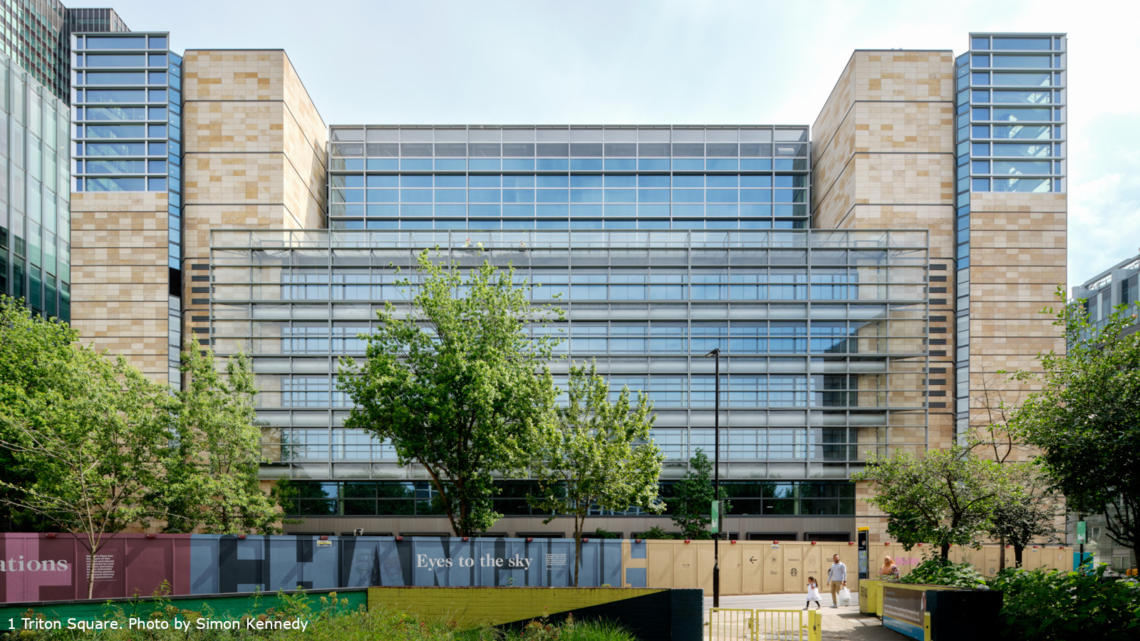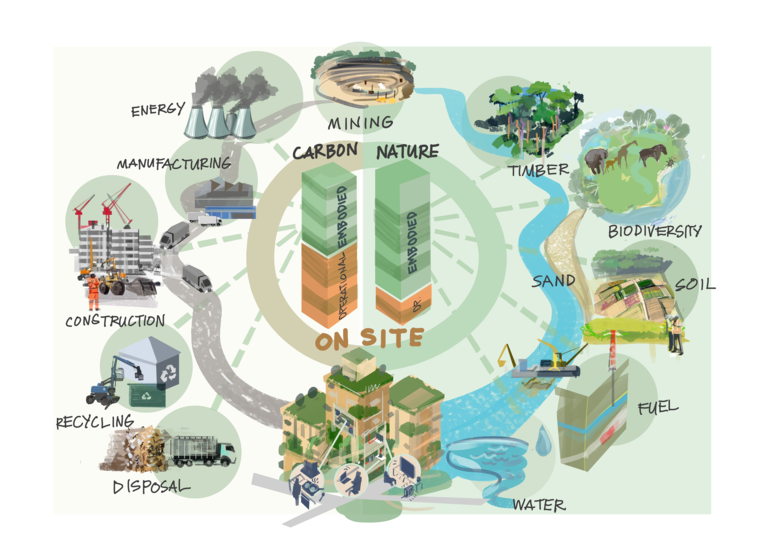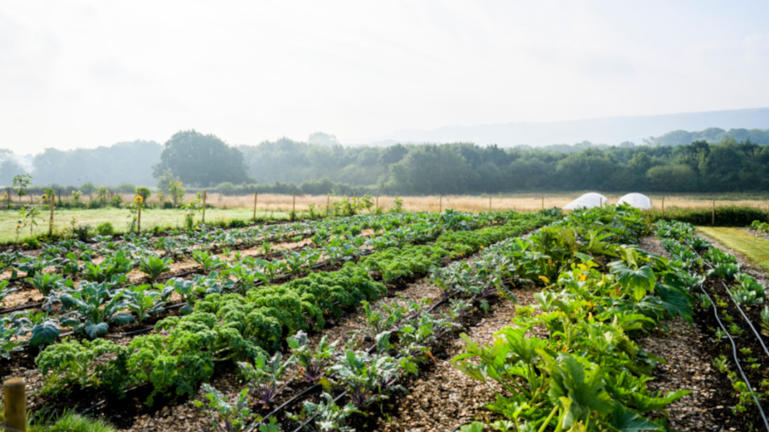Nature is in crisis. In the past 50 years, wildlife populations have declined by an average of 69% globally, and over one million species are now at risk of extinction in the coming decades (WWF, 2022). There is a considerable risk that we will very soon reach tipping points beyond which nature can never recover.
Over half of the global GDP, USD $44 trillion of economic value generation, is moderately or highly dependent on nature and therefore exposed to risks when nature is degraded or lost entirely. As nature declines, the biosphere loses its ability to provide, regulate and support critical ecosystem services, including, carbon sequestration, water purification and primary production (WEF, 2020; TNFD, 2023), challenging our ability to survive and thrive.
Ratified by 196 member states of the UN at COP15 in December 2022, the Kunming-Montreal Global Biodiversity Framework (GBF) established a global goal to halt and reverse nature loss by 2030. Like net zero for carbon, this ‘nature positive’ goal articulates the level of ambition required from all parts of society if we are to prevent catastrophic nature loss. The term ‘nature positive’ is increasingly gaining traction within all sectors yet remains poorly defined at sub-global scales.
Through land conversion, exploitation of natural resources, pollution and its contribution to climate change, the built environment is a significant cause of nature loss. Reversing this requires transformative change across the entire value chain, and WBCSD’s recently published Roadmap to a Nature Positive Built Environment charts this path. It may sound daunting but the goal to become nature positive by 2030 is highly aligned with halving carbon emissions by 2030 and achieving net zero carbon by 2050. Many of the measures that we need to employ to decarbonize the built environment also help to reduce nature loss and vice versa, for example: prioritizing building retrofit over new build, promoting circular design, and practicing sustainable procurement.
But how does the global ‘nature positive’ goal translate down to the building scale? Could buildings ever be truly ‘nature positive’? Can we use the recent and substantial advancements in our understanding and measurement of whole life carbon of buildings and infrastructure to accelerate the journey to a nature positive built environment?
The means to halt and reverse nature loss within the red line boundary of the building’s plot and nearby surrounding areas are well understood. However, the globalization of construction supply chains means that nature impacts associated with a building could occur thousands of miles away from its site. Across the wider industry, there is limited understanding of how buildings impact nature remote from the site across the whole life cycle and throughout the value chain.
Upstream value chain (material extraction, mining and manufacturing) impacts on nature are ‘embodied’ within the fabric of the buildings and are likely to dwarf the on-site direct impacts on nature resulting from site clearance and construction of the building. One study indicates that 95% of the construction sector’s impact on nature is associated with upstream (supply chain) activity compared to 5% of impacts occurring at the location of the construction site (Wilting and Oorschot, 2017). However, these embodied impacts are rarely considered during building design and there are no frameworks to measure embodied nature impacts partly due to significant absences of data and lack of transparency in value chains.
Click on the image to enlarge it.
Contrary to this, over the past 10 years there have been substantial advancements in the measurement and understanding of embodied and whole life carbon of buildings. We can leverage our knowledge of whole life carbon to accelerate our understanding of the whole life nature impacts of buildings.
What are embodied nature impacts and dependencies?
Whole life carbon assessment (WLCA) frameworks show us how we could start to measure embodied nature impacts along the construction value chain: from raw material extraction and production, to design and construction, and operations and maintenance, then finally to demolition and waste.
However, unlike carbon, both nature impacts and dependencies must be scrutinized. The built environment is dependent on nature and is the largest global consumer of raw materials. In 2019, urban areas were responsible for the extraction of sixty billion tons of renewable and non-renewable raw materials, which included plants, fossil fuels, ores and other construction materials, of which 40% was stone, sand and gravel, and 25% was virgin timber (IPBES, 2019). Sand, the foundation of modern civilization, is essential as an aggregate for concrete and glass production but is being mined at a far quicker rate than is being naturally replenished. Subsequently, there is a looming resource crisis as our demand for sand will only increase as the global population grows, with close to 10 billion people expected to inhabit our planet by 2050 (UN, 2017).
Additionally, the construction industry is reliant on water extraction, with global concrete production accounting for 9% of global industrial water withdrawals. By 2050, 75% of this water demand for concrete will occur in regions expected to experience water scarcity (Miller et al, 2018).
Many value chain stages of the built environment system also depend on functioning water flows and water reserves, such as for extraction of raw materials, construction of building materials and water use during operations.
We also must consider the in-situ (on-site) vs ex-situ (off-site) impacts along the construction value chain. Taking mining as an example, key for the built environment, on-site activity causes significant air, water and soil pollution, which can have severe impacts on human health, potentially leading to chronic respiratory diseases and heavy-metal blood poisoning (Nkosi et al, 2015; Raj and Das, 2023). Additionally, mining has a detrimental direct impact on nature through land-use change, with the sector driving 7% of all global deforestation (Bradley, 2020). The off-site indirect impacts can be equally as significant, as the development of transport infrastructure and other economic activities in newly opened forests can result in forest loss and degradation up to 100km away from the original site. Subsequently, one-third of the world’s forests may already be affected by mining. (Bradley, 2020).
Designing a nature positive building:
It is not clear whether it will ever be possible to have a truly ‘nature positive building’. This would require that the overall impact on nature, in all its complexity, across the whole life of the building, up and down the value chain, is net positive. It is certainly hard to imagine how that would be possible with today’s design approaches and technologies. But ‘nature positive’ does set out a vision and establishes the level of ambition that is necessary in the long-term for the design, construction, use and dismantling of buildings.
We must adopt circular economy principles across the construction industry, reducing the use of virgin raw materials and greatly lowering the levels of building waste, which can be a significant proportion of the weight of the building materials in the construction and demolition phases. This includes reusing buildings wherever possible; refusing construction on sites with high habitat value; efficiently building for long-term use. We must also specify the right materials, avoiding those that are non-renewable, nature- or carbon- intensive and heavily polluting. Developers and building designers also need to start asking their value chain partners challenging questions about the provenance of materials, and demand transparency and better data. This means adopting nature-centered design approaches that enhance and leverage the function of healthy ecosystems, integrating nature-based solutions that work with nature, rather than against it.
Measuring whole life nature impacts
Adopting a whole life cycle approach to the assessment of nature impacts of buildings and infrastructure is essential if the industry is to play its full role in halting and reversing nature loss by 2030. We need to understand the nature impact of every building across the whole life cycle, from extraction and processing of materials to the demolition and disposal phases. By using the advances that have been made to assess the whole life cycle carbon of buildings and leveraging areas of commonality wherever possible, we can introduce a common language for the nature impacts of the construction value chain. A standardized methodology for assessing the nature impacts of buildings would enable benchmarks and targets to be established in a consistent way and would be an essential first step on the journey toward nature positive buildings. However, the whole life assessment of nature impacts associated with buildings diverges significantly at the point of measurement and metrics which are far more complex than for carbon. There is important activity underway to create frameworks for the measurement of nature-related risks and impacts, most notably by the Taskforce for Nature-related Financial Disclosures (TNFD) and the Science-Based Targets for Nature (SBTN). While these focus on corporate-level impacts, it is likely that the underlying measurement principles, methods and many of the metrics will have relevance at the building system level.
Moving forward
Truly nature positive buildings may never be feasible, but we need to have this as our goal, our desired destination, if the built environment is to become part of the solution to the nature crisis, rather than one of the most significant causes of nature loss. The embodied nature impacts of buildings that occur remote from the construction site are likely to vastly outweigh the site-based nature impacts. Establishing a framework to measure nature impacts of buildings is a critical first step that will be progressed by a group of WBCSD members in advance of COP16. Whole life carbon measurement frameworks, combined with emerging nature disclosure frameworks such as the TNFD, provide a promising way forward, driving demand for better transparency and data. Ultimately, as built environment practitioners, if we are serious about reversing nature loss, we must greatly enhance our knowledge, data and understanding of these embodied nature impacts in the same way as we have done for carbon.
Curious to explore examples of buildings that have a positive impact on nature? Have a look at these case studies:
- Refurbishing buildings to alleviate environment pressures with biodiversity benefits: 1 Triton Square, Arup HQ in London
- The construction process of a low carbon and nature impact timber-based factory for Vestre in Norway, by Woodcon, a partner of Stora Enso: ThePlus
- Product innovation for the Square Learning Center of University of St. Gallen in Switzerland by Holcim
Resources
WBCSD Circular Transition Indicators v4.0 – Metrics for business, by business









